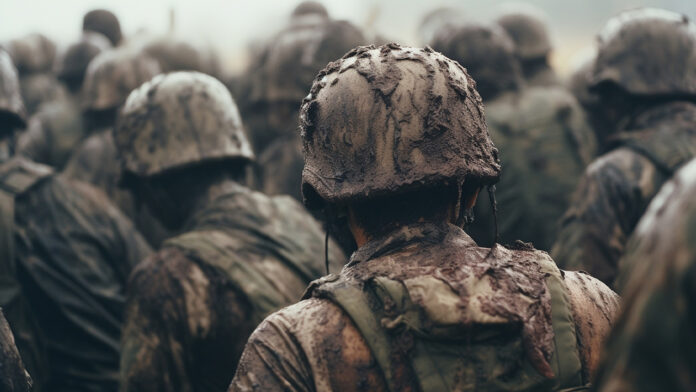World War II, a cataclysmic global conflict that unfolded between 1939 and 1945, remains one of the most pivotal chapters in human history. This monumental struggle involved nations from around the world, reshaping geopolitical landscapes and leaving an indelible mark on the collective memory of humanity. In this article, we delve into the intriguing facts that surround World War II, from key events and battles to the human stories that defined an era.
The Global Stage is Set
Axis Powers and Allied Forces: World War II saw the emergence of two opposing alliances—the Axis Powers, led by Germany, Italy, and Japan, and the Allied Forces, comprising nations such as the United States, the United Kingdom, the Soviet Union, and China. The conflict became a truly global struggle as nations aligned with one of these coalitions.
Spark of Conflict: The war was ignited by the invasion of Poland by German forces on September 1, 1939. This aggressive move prompted Britain and France to declare war on Germany, setting the stage for a global conflict.
Pivotal Moments
D-Day Invasion: The Normandy landings on June 6, 1944, famously known as D-Day, marked a turning point in the war. Allied forces, under the command of General Dwight D. Eisenhower, landed on the beaches of Normandy, opening a crucial Western Front against Nazi-occupied Europe.
Pearl Harbor Attack: On December 7, 1941, the Japanese attacked the United States Pacific Fleet at Pearl Harbor, drawing the U.S. into World War II. The surprise assault led to a declaration of war by the United States against Japan and its allies.
The Holocaust
Systematic Genocide: The Holocaust, orchestrated by Nazi Germany, was a dark chapter in World War II. The systematic genocide targeted six million European Jews, along with millions of others, including Romani people, Poles, Soviet POWs, and individuals with disabilities.
Concentration and Death Camps: The horrors of the Holocaust unfolded in concentration and death camps such as Auschwitz, Sobibor, and Treblinka. These camps became symbols of the atrocities committed during the war.
Battle of Stalingrad
Epic Showdown: The Battle of Stalingrad, fought between August 23, 1942, and February 2, 1943, was one of the largest and bloodiest battles in history. The Soviet Union successfully defended the city, dealing a decisive blow to the advancing German forces.
Turning Point on the Eastern Front: Stalingrad marked a turning point on the Eastern Front, where the Soviet Union began to push back against the German invasion. The harsh winter and Soviet resilience played crucial roles in the Soviet victory.
The Pacific Theater
Island-Hopping Campaign: In the Pacific, the Allies pursued an island-hopping strategy, aiming to capture key strategic islands and gradually move closer to Japan. Battles such as Iwo Jima and Okinawa were pivotal steps in this campaign.
Atomic Bombs on Hiroshima and Nagasaki: The Pacific conflict concluded with the dropping of atomic bombs on Hiroshima (August 6, 1945) and Nagasaki (August 9, 1945) by the United States. These devastating attacks led to Japan’s surrender, marking the end of World War II.
Human Stories
Code Talkers: Native American Code Talkers played a crucial role in the war, using their native languages to transmit coded messages that proved unbreakable by enemy forces. Their contributions were particularly significant in the Pacific theater.
The Night Witches: The Soviet 588th Night Bomber Regiment, known as the Night Witches, was an all-female bomber unit that conducted daring nighttime raids against German positions. Their bravery and skill earned them a formidable reputation.
Technological Advancements
Enigma Code and Codebreaking: The German Enigma machine, used for encrypting messages, posed a significant challenge to the Allies. Codebreakers, including Alan Turing and his team at Bletchley Park, successfully deciphered Enigma-encoded messages, providing crucial intelligence.
Jet Aircraft and V-2 Rockets: World War II witnessed significant advancements in military technology, including the introduction of jet aircraft by Germany and the development of the V-2 rocket. These innovations laid the groundwork for post-war aerospace advancements.
Aftermath and Legacy
United Nations: The aftermath of World War II led to the formation of the United Nations (UN) in 1945. The UN was established to promote international cooperation, prevent future conflicts, and address global challenges.
Division of Germany: The defeat of Nazi Germany resulted in the division of the country into East and West Germany. The ideological and physical division persisted until the reunification of Germany in 1990.
Remembrance and Commemoration
Holocaust Remembrance Day: Holocaust Remembrance Day, observed annually, honors the victims of the Holocaust. It serves as a solemn reminder of the atrocities committed during World War II and the importance of preventing such horrors in the future.
Veterans’ Day and Memorial Day: Veterans’ Day and Memorial Day pay tribute to the servicemen and women who sacrificed their lives during World War II and subsequent conflicts. These observances serve to honor their courage and commitment to freedom.
Conclusion: A Tapestry of Sacrifice and Resilience
In conclusion, World War II stands as a tapestry woven with tales of sacrifice, resilience, and the indomitable spirit of humanity. The monumental conflict shaped the course of history, leaving an enduring legacy that continues to influence geopolitics, international relations, and the pursuit of global peace. As we reflect on the fascinating facts surrounding World War II, we honor the memory of those who lived through its tumultuous times and recognize the importance of learning from the past to build a better future.

